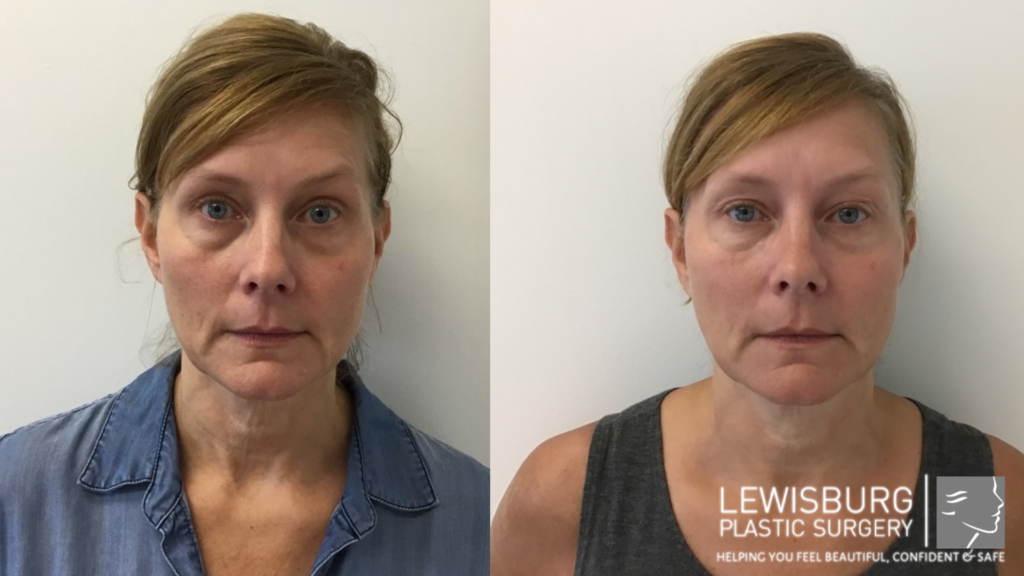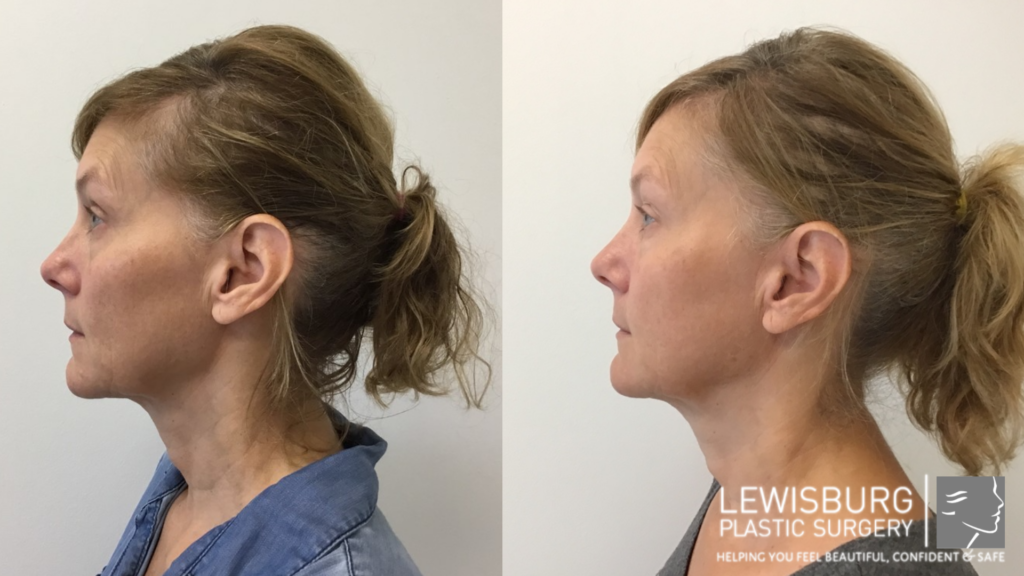Microneedling
While it might sound counter-intuitive, intentional and controlled micro-injuries to the skin can actually make significant improvements to the overall tone and texture. This is because new collagen and elastin are produced as the skin works to heal itself, which improves elasticity and a hydrated, healthy, and youthful appearance. This is the science behind microneedling, a minimally-invasive treatment option that is suited for a wide range of patients and aesthetic concerns. At Lewisburg Plastic Surgery, patients can choose safe and effective microneedling procedures to improve the overall quality and appearance of their skin.
What does microneedling treat?
Microneedling treats a wide range of common skin concerns in both tone and texture. The treatment is an effective method of treating common issues related to the natural aging process, environmental damage, and more. Some concerns that can be treated using microneedling include:
- Scarring, including acne scars
- Wrinkles and fine lines
- Sun damage and sunspots
- Uneven skin tone
- Redness
- Stretch marks
- Skin laxity
- Enlarged pores
- Thin skin or crepey texture
- Uneven texture
While microneedling is safe for a majority of patients, it is contraindicated for those with certain skin conditions including keloid scars, scleroderma, and active infections or acne. Some patients may be advised to try other treatments to prevent unnecessary damage, including those with a history of eczema, herpes simplex infection, and patients with new scars or keloids. Finally, microneedling is not recommended for those who are pregnant or breastfeeding. During a consultation, your microneedling provider will review your health history and treatment goals to recommend whether microneedling is the best option for you.
Microneedling Frequently Asked Questions
Microneedling is one of the most sought after collagen induction treatments for its ability to build new collagen, improve skin tone and texture and fade scars without surgery or downtime! Get your most frequently asked questions answered in this short video.
Frequently Asked Questions
-
-
What is Microneedling?
Microneedling treatment allows for controlled induction of the skin’s self-repair mechanism by creating micro-“injuries” in the skin, which triggers new collagen synthesis, yet does not pose the risk of permanent scarring. Microneedling is extremely versatile and can be used on all parts of the body: face, neck, decollete, arms, hands, legs, abdomen and back.
-
-
How is the procedure done?
First the skin care nurses will apply a topical numbing cream to the treatment areas. This will help to make the experience as comfortable as possible during the microneedling process.
Following the numbing, a thin layer of peptide serum is applied to the skin. Next the microneedling device, called the SkinPen is glided across the repair area in a gentle motion. The SkinPen is a handheld device similar in shape to a pen with very tiny needles at the tip. The microneedles penetrate the skin in a very controlled, precise manner; creating micro-channels or tiny holes deep into the dermis layer of the skin. The pinpricks are so small that you likely won’t notice them after the procedure.
After the procedure, Environ’s post procedure products are applied. -
-
What does it feel like?
Depending on the depth of the microneedle penetration, the treatment may feel like a slight tickling sensation to more of a pinching sensation. -
-
How long does the procedure take?
The numbing process takes approximately 30 minutes and the procedure is normally completed within 45-60 minutes, depending on the required treatment and anatomical site. In total, the average microneedling session lasts approximately 2 hours. -
-
What is the downtime?
After the procedure, the skin will be red and flushed in appearance in a similar way to moderate sunburn. You may also experience skin tightness and sensitivity to touch on the area being treated. You can also experience some facial swelling the day after the treatment. You can use cold compresses and keep your head elevated on a pillow at night to reduce the swelling. Make-up can be used the next day, this can help disguise the redness as it dissipates. After four days there is barely any evidence that the procedure has taken place.
-
-
When will I see the results?
Most people notice healthier-looking skin immediately, and the natural repair process of the skin continues to progress over the course of several weeks. Visible changes appear after approximately 3 treatments.
-
-
How many treatments will I need?
The course of treatment will be determined by your skincare nurse based upon your individual treatment goals and the health of your skin. Most patients receive a series of 6 treatments spaced about 4-6 weeks apart. To maintain the results of your treatment, you’ll need multiple sessions and maintenance treatments. -
-
Are there any contraindications or precautions?
Microneedling treatment is contraindicated for patients with: keloid scars, scleroderma, collagen vascular diseases or cardiac abnormalities, a hemorrhagic disorder or hemostatic dysfunction, active bacterial or fungal infection.
Microneedling treatment has not been evaluated in the following patient populations, as such, precautions should be taken when determining whether to treat:
– scars and stretch marks less than one year old
– women who are pregnant or nursing
– keloid scars
– patients with history of eczema
– psoriasis and other chronic conditions
– patients with history of actinic (solar) keratosis
– patients with history of herpes simplex infections
– diabetics or patients with wound-healing deficiencies
– patients on immunosuppressive therapy
– skin with presence of raised moles or warts on targeted area -
-
What is the average treatment cost?
The cost will depend on the treatment area. During your initial consultation, the areas to be treated will be discussed and a fee quote per treatment session will be given to you. You will have a choice of 3 payment options:
– pay for each treatment individually (pay-as-you-go)
– purchase a pre-paid package of treatments and receive a 20% discount off of the entire package
– you may also apply for Care Credit
Before & After


The microneedling procedure
After completing a consultation with one of our expert skin care nurses, the microneedling procedure is performed in our comfortable office setting. First, a topical numbing cream is applied to the treatment area to ensure that the procedure is comfortable.
Once numbing has taken effect, the nurse will apply a thin layer of peptide serum to the skin. At Lewisburg Plastic Surgery, we use the SkinPen microneedling device to complete microneedling treatments. This is a specialized handheld microneedling pen that contains very thin, fine needles adjusted for depths between .25mm and 2.5mm according to each patient’s needs and treatment goals. Using the SkinPen, thousands of tiny pinpricks are introduced to the skin. These micro-injuries are so small that each individual mark is difficult to see with the naked eye after the procedure. On average, SkinPen microneedling treatments can be completed in 30 minutes. This will vary depending on the size of the treatment area. Once microneedling is complete, a custom selection of skincare products will be applied.
After microneedling
Immediately following microneedling, patients will notice redness in the treatment area. Some swelling and tenderness are also normal side effects. These should subside quickly. No downtime is required after microneedling, though many patients choose some social downtime as visible side effects subside. Your nurse will provide specific aftercare instructions. Results from microneedling are quickly noticeable after the procedure as the body naturally builds new collagen through the healing process.

